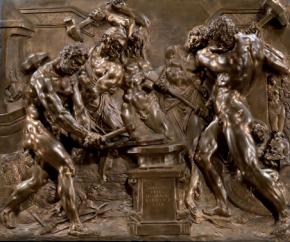words by Carol King
The bronze sculptures of Italian artists including Lorenzo Ghiberti, Donatello, Benvenuto Cellini, and Umberto Boccioni will be on display from 15 September at London’s Royal Academy of Arts in the ‘Bronze’ exhibition.
The show takes visitors on a journey spanning 5,000 years and three continents – Asia, Africa and Europe – to reveal the stories behind some of the world’s greatest artworks created by ancient and contemporary sculptors. It is the first time a cross-cultural exhibition on such a grand scale has ever been attempted. ‘Bronze’ presents more than 150 of the finest bronzes in existence, many of which have never been seen in Britain before.
Among the earliest pieces on show is the Chimera of Arezzo (c. 400 BC), a masterpiece of Etruscan art on loan from the Museo Archeologico Nazionale in Florence. In the Renaissance section bronzes by Italian sculptors have a particularly strong presence. Works include Ghiberti’s St Stephen (1425–29) for one of the external niches on the church of Orsanmichele, Florence; Giovanfrancesco Rustici’s monumental ensemble of St John the Baptist Preaching to a Levite and a Pharisee (1506–11) that lived above the north door of the Florence Baptistry for almost 500 years; and Cellini’s modello for Perseus (c. 1554).
Important archaeological discoveries are also featured, such as a Roman cavalry helmet found in Cumbria in northwest England in 2010.
A section of the show is devoted to the processes involved in making bronze, demonstrating how models are made, cast and finished using various different techniques.
The ‘Bronze’ exhibition ends on 9 December. Admission is £15.50.













